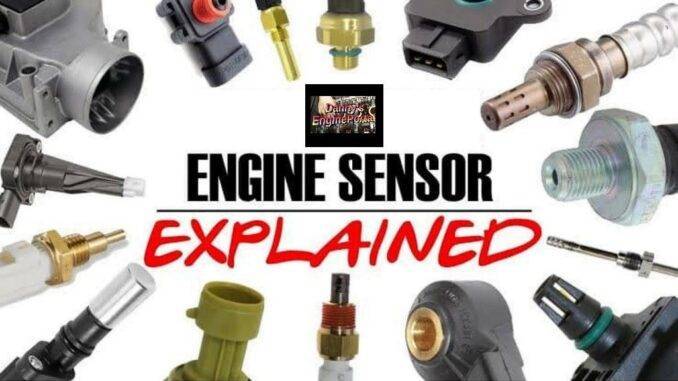
Before the use of computerized automotive sensors, fixing a car was way easier.
In the old days, it was a lot different. For instance, either moving a distributor, or adjusting a screw on a carburetor, might be all you had to do.
If you had fuel, spark and you were close to correct in your ignition timing, your engine would run. As a result, problems in these mechanical systems, were relatively easy to solve.
Today, we have electronic automotive sensors, that monitor various aspects of the vehicle. And, send information to the driver or (ECU PCM). Then, the (ECU PCM) automatically makes adjustments to a particular component, based on the information it received from the sensor.
Gasoline engines need the proper “air fuel” mixture, with compression, to squeeze the mixture all together. Only then, can the spark plug ignite the mixture properly. Today, many car owners are not even aware of how many automotive sensors, their vehicle actually has.
So, the difference today, is that a variety of engine parameters, must be met and controlled, all at the same time.
Automotive Sensors, Must All Be Working Properly
So, if one or more of the automotive sensors is not working properly. The, the engine may run poorly, or not at all.
Some Of These Sensors Include:
- Crank Position (CKP)
- Cam Position (CMP)
- Engine Coolant temp (ECT)
- Manifold Absolute Pressure (MAP)
- Mass Air Flow (MAF)
- Throttle Position (TPS)
- Intake Ambient Air Temp (IAT)
- Knock Sensor (KS)
- Oxygen Sensor (O2)
For example, what happens if a (CKP) sensor fails. Although the engine is mechanically sound, it has no way of figuring out, when the spark plugs should fire. As a result, the engine will not start.
Similarly, with a failed (ECT) sensor, the (ECU PCM) might attempt to compensate for what it sees as, a cold engine. As a result, adjusting the fuel injection and timing, causing the engine to run poorly. You may even think that there is something wrong, with the ignition system or the spark plugs.
But, in reality there may be nothing wrong with the engine at all. And, it may be operating, at its proper temperature. But, because the sensor has told the (ECU PCM) that there is a problem, the (ECU PCM) sets out to correct it. The (ECU PCM) can also sense, when something has gone wrong. And, can inform the driver, by turning on the (CEL) light.
Beyond Automotive Sensors, We Have Programs Called Monitors
They look at the values from these proportional integral derivatives (PID)s, to make sure everything is working correctly.
Some Of These Monitors Include:
- (EGR) monitor
- (EVAP) monitor
- “Short Term Long Term” fuel trims
- Engine warm up time “tests the thermostat function”
- Misfire monitor “collected from (CKP)”
So, Most Automotive Sensors, Fit Into Different Types:
One Way Position Sensors
Pressure sensors, temperature sensors, and “I will call them” one way position sensors” like the (TPS). They all change electrical resistance, that the (ECU PCM) reads, as a change in voltage. So, the (ECU PCM) sends a constant 5 volts and then measures the returned voltage.
Rotational Sensors Automotive Sensors
Rotational sensors, like the Cam Position (CMP) and the Crank Position (CKP), normally use a pulse generating sensor. The difference is that they actually create, an AC voltage signal.
Hall-Effect Sensors
They can also use a “Hall Effect” sensor, that will create a digital DC voltage.
Oxygen Sensors (O2) Automotive Sensors
So, (O2) sensors are in a class all their own. Consequently, they have a material inside them, that creates a voltage “About 450 mV”. Because, of having a difference in oxygen content, on each side of the sensor. As a result, the greater the difference, the higher the voltage “This Pegs Out Just Below 1 Volt”.
Conclusion
So, always do your diagnostic homework first. Because, replacing automotive sensors, won’t solve a drivability or emissions problem, if the problem is not the sensor.
BY DANNY BENDER




